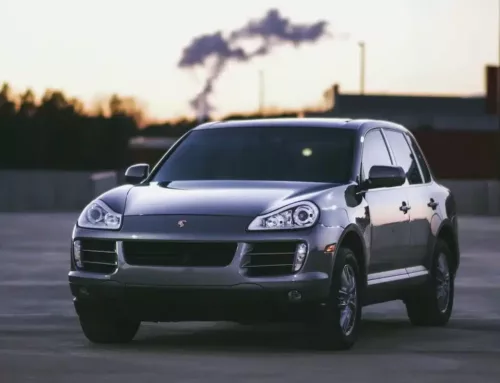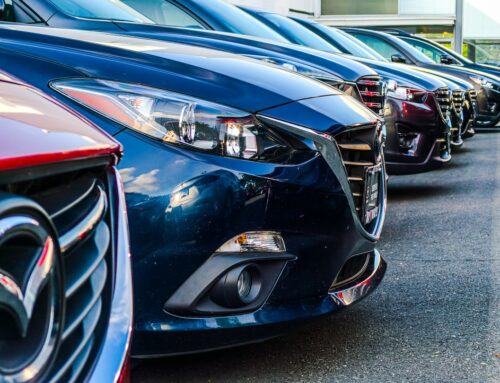GAP insurance is designed to be protection for drivers when they purchase a new vehicle. It is advantageous in most situations for buyers to purchase GAP insurance when they purchase a vehicle, but they might not be aware of it or the benefits of having it. Dealerships will want to offer GAP insurance to buyers in most cases and will want to make sure they can explain what it is, what it covers, and how it benefits the customer. By selling it when it’s needed, dealerships can also see a number of benefits.
What is GAP Insurance?
Insurance may not cover everything in the event a car is totaled. Even with insurance, drivers can end up owing money on their totaled vehicle after they receive the payout or settlement for the accident. In these situations, the driver can owe more than they can afford to pay but will be stuck making payments to pay it off because the insurance just doesn’t cover everything. That’s where GAP insurance can help.
GAP insurance covers the difference between what the insurance company provides in a settlement and what the driver paid for the vehicle or what they still owe on it if they financed it. Drivers may prefer to have GAP insurance if their vehicle will depreciate in value quickly, they used a small down payment and owe most of the total price on the vehicle, they’re going to be paying it off for three years or longer, or there is a large payment to make at the end of the finance agreement.
In any of these situations, if a driver is in an accident, even if it isn’t their fault, they could end up owing on the vehicle after they receive an insurance payout. Those who have GAP insurance, though, will be able to receive funds that cover the money that’s still owed. It doesn’t replace collision insurance but supplements it to protect the driver from having to pay out of pocket if they need to replace the vehicle after it’s totaled in an accident.
Benefits for Customers
Customers receive numerous benefits if they purchase GAP insurance, especially if they ever need to use it. GAP insurance is typically inexpensive and can provide the following benefits for drivers.
Pay Off the Vehicle After an Accident
It’s going to be difficult to afford a new vehicle after an accident while still paying off the old one. If the insurance settlement doesn’t cover the full amount of money owed on the vehicle, the driver will be required to cover the missing amount. GAP insurance can be used to cover the difference, so the driver can pay off the old vehicle and purchase a new one.
Protect the Investment
It’s expensive enough to purchase a new vehicle, but depreciation can cause the value to decrease quickly. Without GAP insurance, the driver may only receive the depreciated amount through a settlement. With GAP insurance, they receive the original value of the vehicle if it’s a total loss and needs to be replaced.
Peace of Mind
It’s easy to underestimate the value of peace of mind. With GAP insurance, drivers know they’ll receive the money they need to replace the vehicle if theirs is totaled. This leads to much less stress after an accident when they should be focusing on their recovery.
Save Money
A GAP insurance policy isn’t expensive. Usually, it’s only a few dollars a month, which is far less than the amount might be if the vehicle is totaled, and the driver must pay the difference between the payout and the cost of a new vehicle. For some customers, this can be the difference between being able to get another new vehicle right away or having to wait a while as they pay off the old one that was totaled.
Benefits for Dealerships
Drivers aren’t the only ones who can benefit from GAP insurance. Dealerships benefit in a number of ways simply by offering it to their customers. Some of the ways they’ll benefit include the following.
Increase Revenue
GAP insurance is something extra that dealerships can market as available to customers, which can help bring in more buyers. This can then lead to more sales and boost the dealership’s revenue, even though GAP insurance is typically inexpensive for buyers.
Increase Customer Retention
Customers appreciate products designed to offer them financial savings, and GAP insurance can do that. With GAP insurance, customers get peace of mind they won’t owe a lot on the vehicle after an accident where it’s totaled, which can be a significant amount of money saved. By offering GAP insurance, the dealership can create repeat customers since the drivers know the dealership can help protect their finances if there is an accident.
Increase Customer Satisfaction
GAP insurance can help buyers feel like they’re protected in the event of an accident, which means they’ll be happier when they purchase a vehicle. This can translate to new leads, as they’ll likely tell friends and family about the deal they received and the extra coverage just in case anything goes wrong.
When to Offer GAP Insurance
Customers may need GAP insurance in a number of situations. If the down payment is less than 20% or the vehicle is financed for 60 months or longer, GAP insurance is a good idea. GAP insurance may be required for a lease and is a good idea for a vehicle that may depreciate faster than normal. Buyers may roll over negative equity from an older loan into a new one, which can mean significant losses if there is an accident. GAP insurance is a good idea in this situation, as it can help prevent financial issues if the vehicle is totaled.
When GAP Insurance May Not be Needed
While GAP insurance is helpful, not all buyers will need it. Dealerships should be aware of when to offer GAP insurance and when offering it may not be needed. If the buyer makes a down payment of more than 20%, for instance, they are unlikely to end up owing more than the vehicle is worth in an accident, so they likely don’t need GAP insurance, especially for the first year or two. If the car loan will be repaid in less than 60 months, the same thing applies. It’s not likely the driver will owe more than the vehicle is worth, so they may not need GAP insurance.
There are also some vehicles that tend to hold their value better, so GAP insurance may not be necessary. Compare the loan balance to the new vehicle’s value to see if GAP insurance is needed. If the balance is less than the value, it may not be necessary to offer them GAP insurance, as it won’t likely be needed.
Dealerships and buyers can receive benefits through offering or purchasing GAP insurance when buying a new vehicle. Dealerships may want to offer GAP insurance to help provide peace of mind to customers, which can provide other benefits like better customer retention. Though all buyers may not need GAP insurance, dealerships that offer it do have an advantage over ones that do not, so it’s definitely something to start offering to buyers right away.
Ready to give your dealership a substantial boost? Contact Vantage Finance and connect with the best F&I partner in the industry today.






